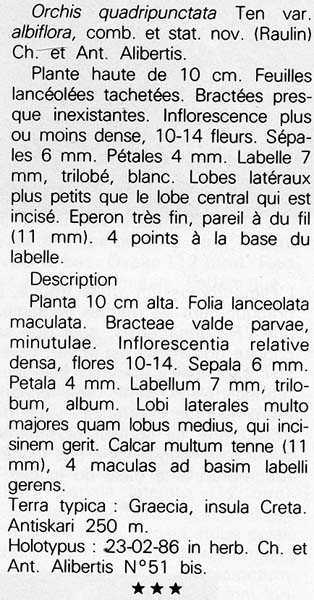Alteration of the genetic design resulting in white flowering is not a sufficient condition to determine a new species. Even a classification as a subspecies seems not to be appropriate. As early as 1905, an orchid guide printed in the U.S. stated: Nearly every plant has albino freaks, and that alone would not be sufficient to split those two closely resembling orchids into two species (Leeming Jelliffe, Helena Dewey/Gibson, William Hamilton: Our native orchids. New York; Doubleday, 1905, p.37).

Regarding taxonomy, i.e. the scientific classification of certain species, the colour of flowers is irrelevant. There are even historical reasons for this fact: The scientifically correct description of a species requires a herbarium record. But with pressed and dried plants the colour is no longer discernible. So the white-flowered plants of a given species with a different flower colour are quaracterised as a variety or a form indicated with the appendix var. or f., e.g. var. albiflora. The process of describing a variety or a form is the same as with a new species. Only the taxa described with all these requirements are scientifically valid. Among them there has to be a description in Latin. Here follows, as an example, the description of Orchis quadripunctata var. albiflora, registered by Chryssoula and Antoine Alibertis in L‘Orchidophile 87/1989, p.112:
Since in many cases there are is no such descriptions, the white forms may be described just as forma: Anacamptis morio f. albiflora.
Terms used for white-flowered or relative forms:
- albiflorum/albiflora – white-flowered
- album/alba – white
- alboflavum/alboflava – whitish yellow
- alboviride – whitish green
- candidum/candida – pure white
- flavescens – yellowish
- virescens – greenish
- pallidum/pallida – pale
- immaculatum/immaculata – spotless